Teacup Poodle vs Miniature Poodle [with Photos]
You’re in the market for a new dog/best friend/family member, and you’re thinking about a teacup or a mini poodle. Decisions, decisions.
Besides being insanely adorable, they’re both brilliant and loyal companions, ready to ride for the squad at a moment’s notice. With those sets of puppy dog eyes, it’s a hard choice to make, for sure.
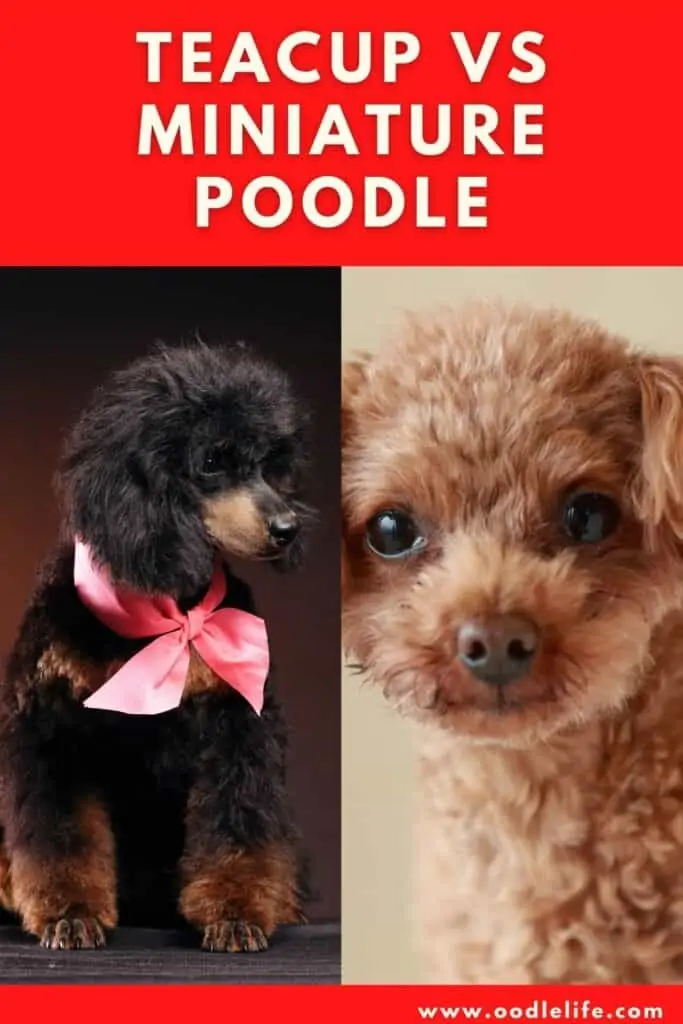
Here, we’ve put together a handy guide to help make that choice a little easier. After reading, you’ll be one step closer to meeting your next furry companion!
Origins
Every dog breed has a story, and the teacup and mini poodles are no different. Starting with the standard poodle, their story is one of royalty, conflict, love, and more, much like ours.
Standard Poodle
First appearing in Germany (or France, depending on who you ask) during the 17th century, the poodle was derived from a long line of European water dogs. While originally intended as a hunting dog, they quickly became popular among the continent’s elite as a status symbol of wealth and privilege.
Through marriage, politics, trade, and social change, the poodle spread to other parts of Europe and beyond. Today, over 300 years later, the poodle is one of the most sought-after and respected dog breeds worldwide.
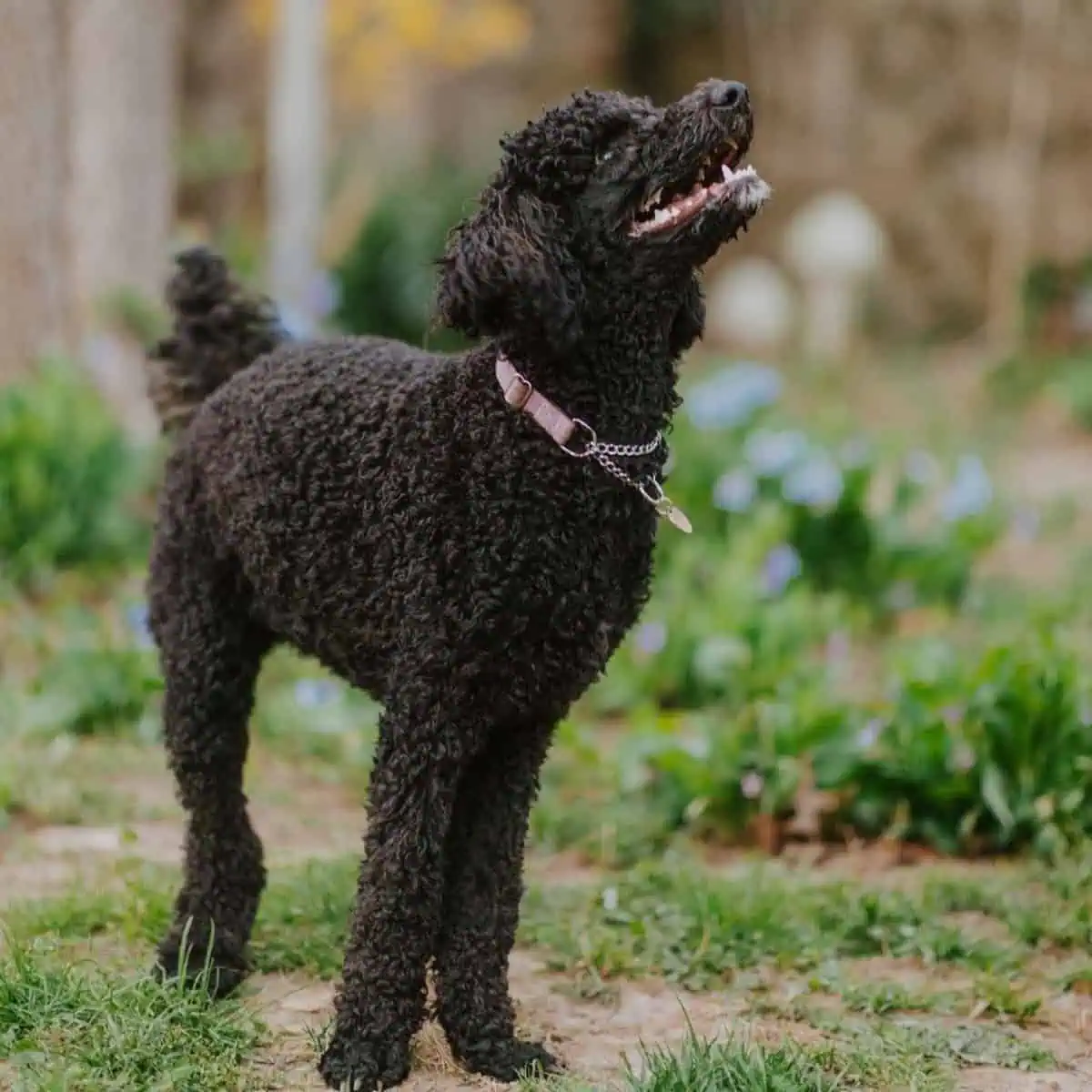
Mini Poodle
As the use of the standard poodle became a regular fixture in circuses and other traveling performances, event organizers recognized the need for a smaller dog. However, they didn’t want to give up the intelligence and acrobatic ability that the poodle possessed.
As a result of years of selective breeding, the miniature poodle hit the scene to solve their problems. It was small enough to engage with other performers meaningfully. They possessed all of the smarts and talent as their full-sized counterparts but could balance and climb where standard poodles couldn’t.
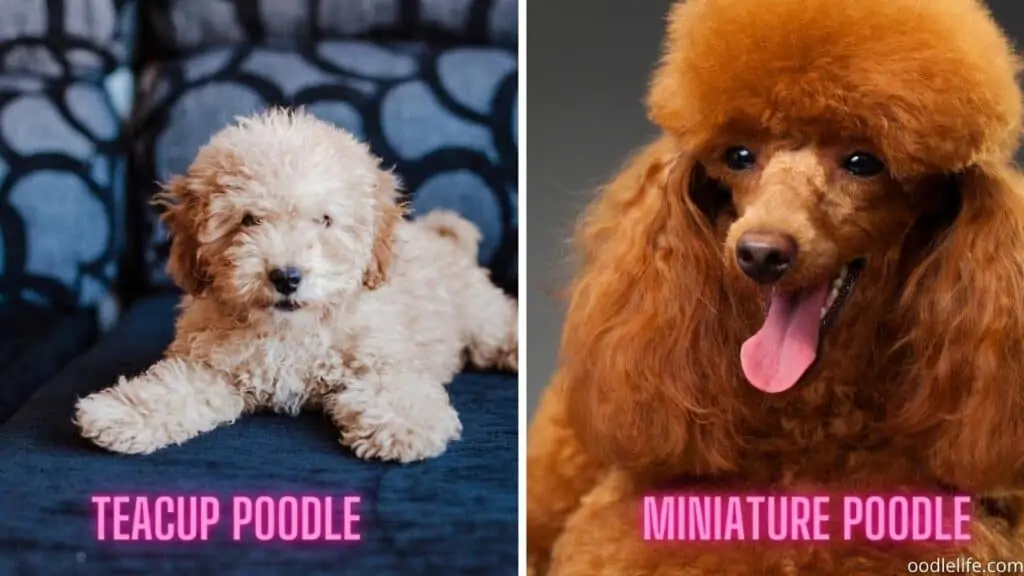
Teacup Poodle
After breeders created the mini poodle, they started selectively breeding an even smaller variety of poodle known as the toy poodle. Then, even smaller. Eventually, the teacup poodle was developed as a companion for the metropolitan elite of Europe and America during the early 20th century.
However, the teacup poodle’s origin is not without controversy. It took many failed attempts to finally get a healthy litter because the dog’s small size was decidedly challenging to maintain. Breeders did get it right, though, and now teacup poodles are highly valued throughout the world.
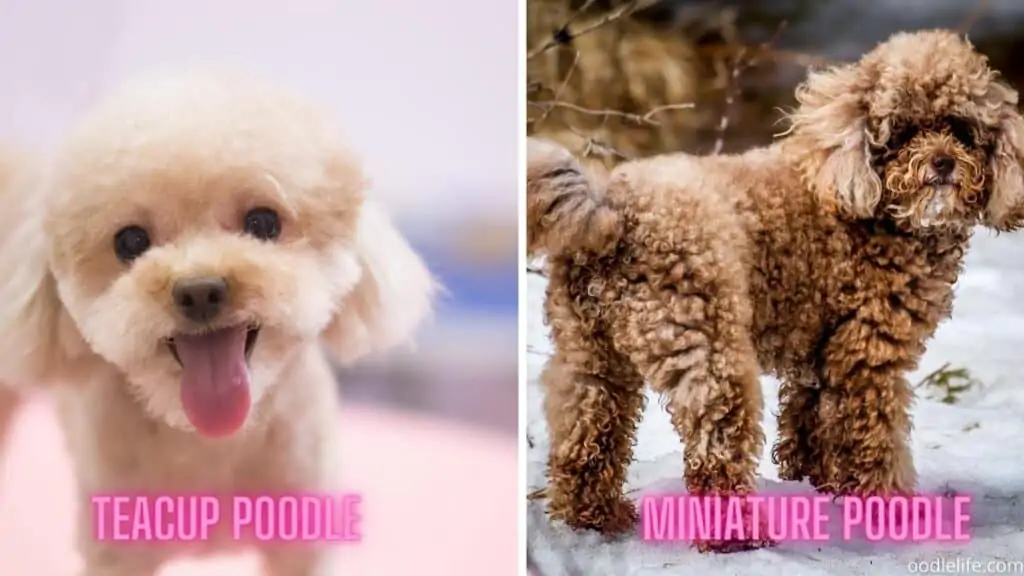
Teacup vs. Mini Poodle Appearance
Teacup and mini poodles share many signature features with the standard poodle. Their fur is almost identical when they’re mature, featuring bouncy and soft curls that don’t grow too long. However, teacup poodles tend to have even softer fur when they are puppies compared to other poodle varieties.
Their facial structures are also about the same. Unlike many breeds like the terrier, poodles have floppy ears that most often hang below their jawline. They’re incredibly fun to play with! The other parts of their faces are also very similar, with stunning eyes, a strong jawline, and longer snouts to bury in your armpit during a thunderstorm.
Moving on to the most important difference, the main distinction between the teacup and mini poodle is their overall size. Since the teacup was specifically bred as a smaller variety compared to other types of poodles, it’s going to be much smaller than a miniature poodle.
The miniature poodle is considered a small dog. Since dogs can vary in weight dramatically, the American Kennel Club doesn’t consider poodles’ weight when differentiating between the sizes. The official height of a miniature poodle is 11 to 15 inches, and the weight is generally accepted to be in the 15 to 17 pounds range.
The teacup poodle, on the other hand, is much smaller. However, there are no official breed standards for teacup poodles. They are generally accepted to be nine inches or less and less than six pounds in weight.
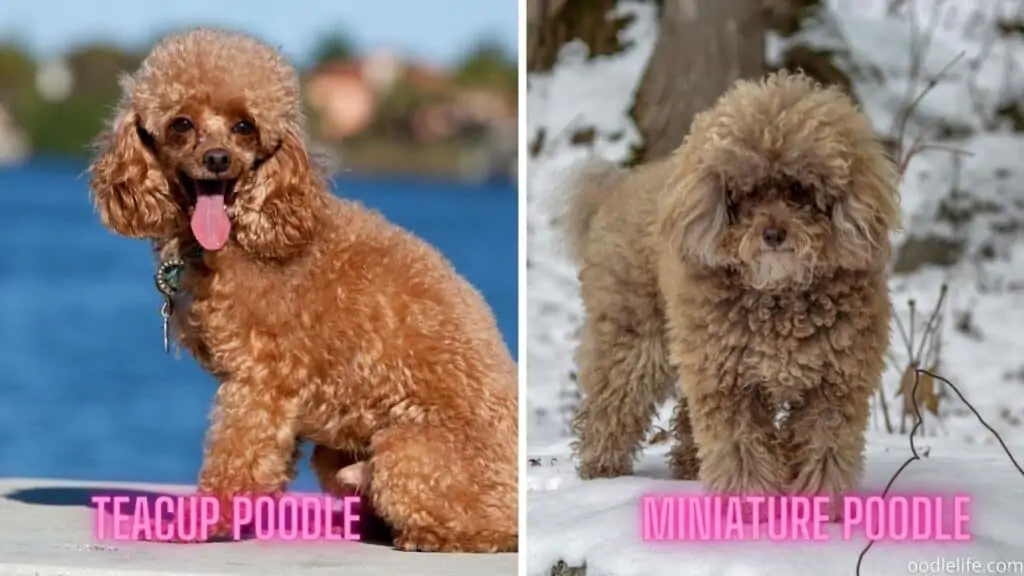
Teacup vs. Mini Poodle Temperament
Both the teacup and mini poodle share a similar temperament to the standard poodle, albeit slightly less powerful of a personality. This is, of course, due to their size, but don’t let that lead you to believe that smaller poodles have less personality.
All poodles are extremely intelligent dogs and need daily stimulation in order to keep them healthy and happy. Poodles thrive with a rule-based environment and often act out if there aren’t standard schedules and practices established early on.
As such, teacup and mini poodles are highly trainable. They respond well to positive reinforcement and learn complex tricks and maneuvers that other breeds might not accomplish. They can even do card tricks!
However, poodles of all kinds tend to be nervous or anxious if they’re not made part of the family. They can’t live in a kennel outside and need a space to call their own inside your home. Although they are rarely as aggressive as some people may claim, they may act out by jumping or barking if you don’t maintain proper behavior through adequate training.
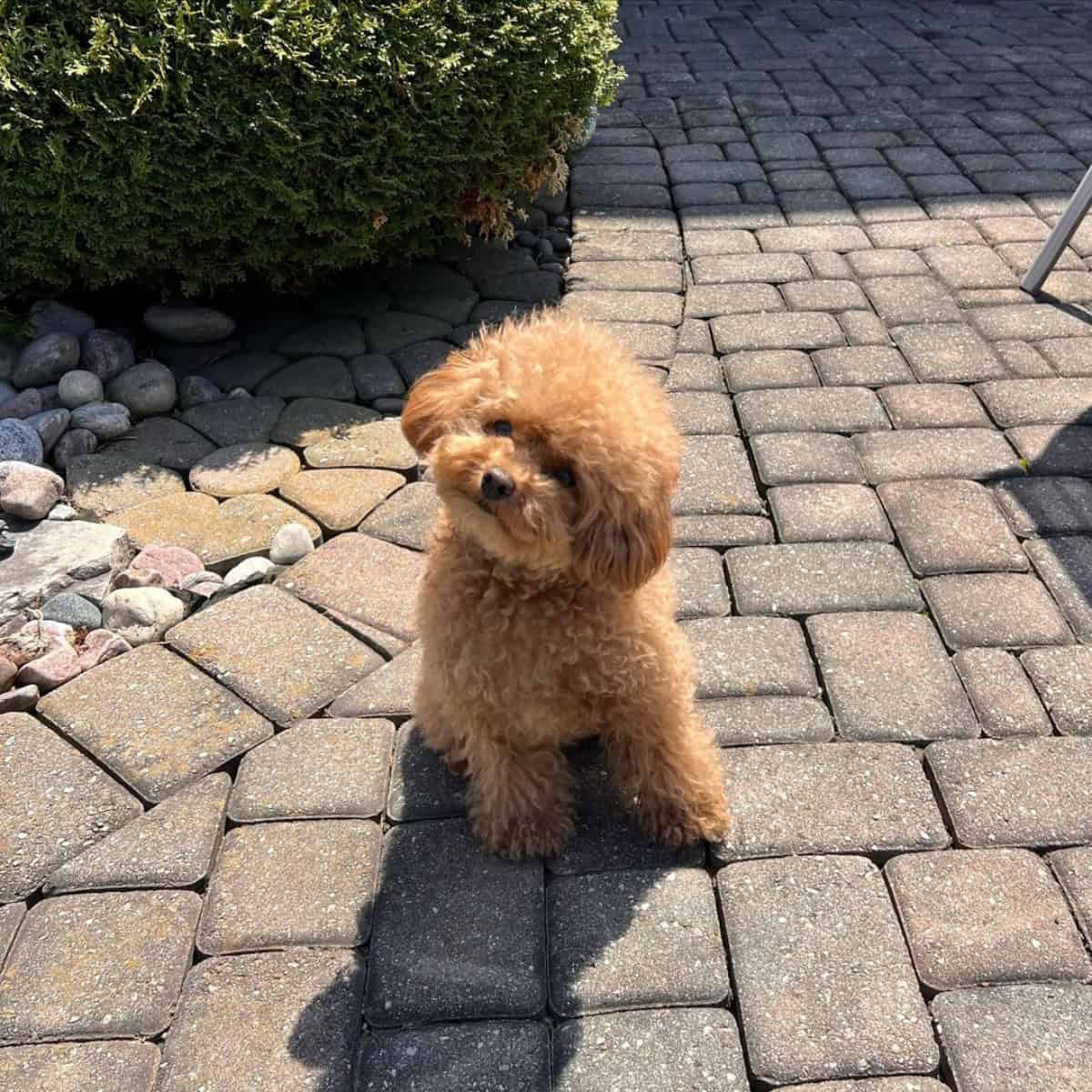
Teacup vs. Mini Poodle Exercise
All poodles, no matter what size they are, need daily exercise. They’re an energetic breed, and without at least a daily walk, they tend to get stir crazy. They’ll tear through that couch like it’s nothing if you’re not keeping up with their daily steps.
However, both teacup and mini poodles are relatively low maintenance if you establish a good exercise routine. A once-daily walk should suffice, but both are willing to do more if you want to. Although playing with your dog can also be exercise, it doesn’t substitute a nice, long walk.
Because teacup poodles are smaller, they don’t need to walk as long or as hard as a mini poodle. You may have to slow down so that their little legs can keep up with you!
Also, since poodles come from water dogs, they love to swim and play in water. However, you need to be careful with teacup poodles because of their size. Although a good swim is healthy for them, they might not have the strength to compete with wake or waves like a miniature poodle can.
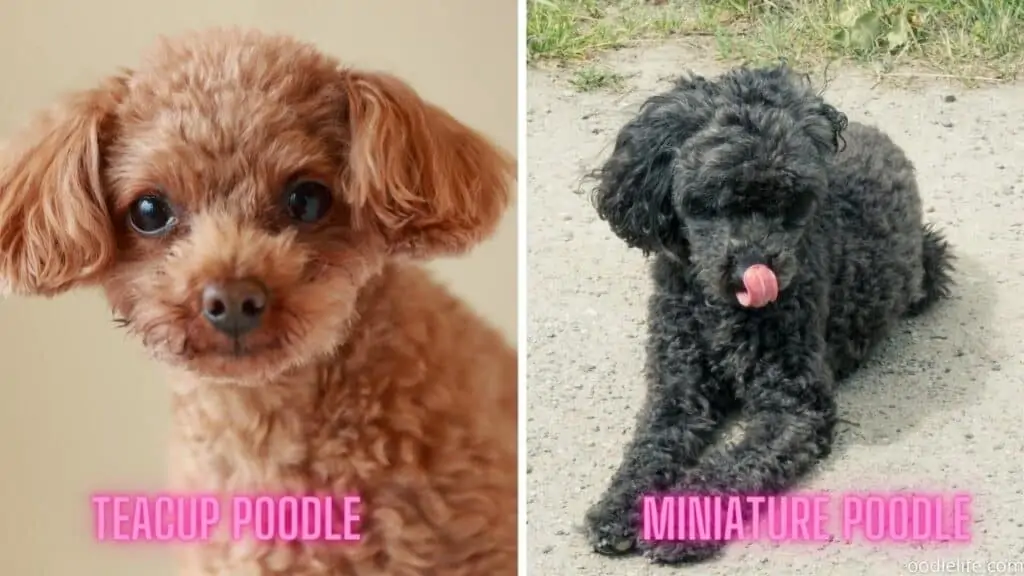
Teacup vs. Mini Poodles Health Concerns
Teacup and mini poodles have a higher risk for certain health issues than other breeds might. Keep the following in mind for both when thinking about either size as your next pet:
- Blindness – All poodles are prone to cataracts and worsening vision over time. It’s common for poodles to start losing their sight earlier than other breeds.
- Diabetes – Although you can combat diabetes with a good diet, poodles have a higher risk of developing it even with a low sugar intake.
- Hip dysplasia – Inadequate exercise or just bad luck makes poodles more prone to painful hip dysplasia.
- Epilepsy – Poodles have a higher risk of developing epilepsy. If you ever see your dog having a seizure, you need to take it to the vet as soon as possible to receive proper medical treatment.
- Addison’s Disease – A serious illness that messes with a dog’s ability to regulate its internal organs. Luckily, there are treatments that can allow your dog to live a long and happy life!
Teacup poodles are prone to more health issues than mini poodles, including:
- Hypoglycemia
- Liver shunts
- Open fontanelles
- Respiratory problems
- Heart problems
- Arthritis

Other Things to Think About
You may have to think about a few of the following things before you decide on a teacup or mini poodle:
- Do you have kids? – Teacup poodles are tiny and fragile creatures. If you have small children, they might not know how to gently play with a teacup poodle, potentially hurting one by accident. On the other hand, miniature poodles might be the better fit for a growing family and often know how to respond to energetic children better than a teacup might be able to.
- Do you live in an apartment or a house? – Since they’re bigger, miniature poodles need more exercise than teacup poodles. They thrive in open spaces, so an apartment might be too small for them to get adequate physical activity. Also, teacup poodles often can’t climb tall stairs or levels around a full-sized house that a mini poodle might be able to.
- Trying to save a bit of money? – Again, due to their size, mini poodles will eat more than a teacup poodle. If you’re trying to save some money on food in the long run, then a teacup poodle will chew up less of your weekly budget for dog food. (See the average monthly Poodle expense budget)
- Teacups aren’t always bred ethically – Do a thorough background check on your breeder if you want to get a teacup poodle. Breeders often resort to unethical methods to breed smaller puppies, so always make sure they aren’t doing anything that might harm the dog or its parents.

Conclusion
By now, you should have a better idea of which size poodle is best for you. Think about your lifestyle and how your new dog will fit into it. Also, consider that teacup poodles aren’t always bred ethically and may develop more health problems than a mini poodle might.
Whether you’re leaning towards a mini poodle or a teacup, we’re sure you’ll find a faithful companion for years to come!